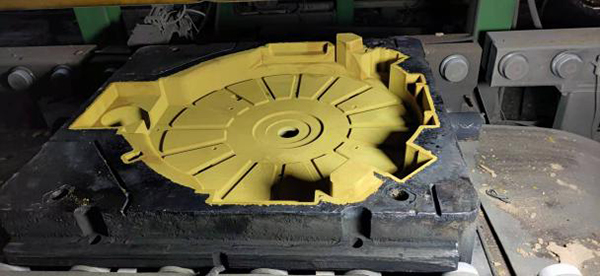Exploring Sand Castings A Key Process in Manufacturing
Sand casting, one of the oldest and most versatile casting methods, has played a pivotal role in manufacturing for centuries. This process involves creating a mold from sand to produce various metal components, making it vital for several industries, including automotive, aerospace, and machinery. In this article, we will explore the intricacies of sand casting, its advantages and disadvantages, and its applications in modern manufacturing.
The Sand Casting Process
The sand casting process begins with creating a mold. To do this, a mixture of sand and a binder is packed around a pattern, which is typically made of metal or plastic. Once the mold is formed, the pattern is removed, leaving a cavity in the shape of the desired object. The mold is then heated to solidify the bonds in the sand, enhancing its strength.
Next, molten metal is poured into the cavity. The heat from the metal causes a slight melting of the sand surface, improving the bond between the sand grains. After cooling, the mold is broken away to reveal the cast item. This process can involve multiple iterations, particularly for complex parts that require precise features and details.
Advantages of Sand Casting
One of the most significant advantages of sand casting is its adaptability. It can accommodate various metals, including aluminum, iron, and bronze, making it suitable for a wide range of applications. Furthermore, sand casting is cost-effective for low to medium production runs, where creating a permanent mold would be economically unfeasible.
Another notable benefit is the ability to create large castings. Sand molds can be crafted in various sizes, enabling the manufacture of substantial components, such as engine blocks and large machinery parts. In addition, the sand used in the casting process is recyclable, emphasizing an environmentally friendly aspect of sand casting.
sand castings

Disadvantages of Sand Casting
Despite its numerous advantages, sand casting is not without drawbacks. One of the primary limitations is its surface finish quality. The texture of the sand can lead to rough surfaces on the final product, necessitating additional machining or finishing processes.
Additionally, precision can be a challenge in sand casting. While the process can produce intricate shapes, it may not achieve the tight tolerances that other methods, such as die casting or investment casting, can provide. This limitation can be critical in applications where precision is paramount.
Applications of Sand Casting
Sand casting is widely used across various industries due to its versatility and cost-effectiveness. In the automotive industry, for example, it is commonly used to produce engine blocks, transmission cases, and various other components. The aerospace sector also benefits from sand casting, particularly in producing lightweight yet strong parts that can withstand extreme conditions.
Moreover, the manufacturing of artistic sculptures and architectural components often employs sand casting. The ability to create intricate designs makes it a favored method among artists and designers.
Conclusion
In conclusion, sand casting remains a fundamental process in modern manufacturing, offering a unique combination of adaptability, cost-effectiveness, and the ability to produce large components. While it faces challenges related to precision and surface finish, its wide applications in various industries underscore its continued relevance. As manufacturers push the boundaries of innovation, sand casting will likely evolve, integrating new technologies to enhance its capabilities and efficiency. Whether it’s producing a high-performance engine part or creating a stunning piece of art, sand casting will always hold a significant place in the world of manufacturing.
Post time:Aug . 17, 2024 14:32
Next:Innovative Techniques in Steel Sand Casting for Modern Foundry Applications
